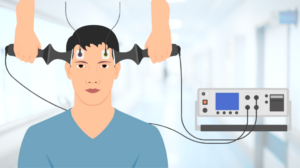![]() According to CAMH, to be diagnosed with panic disorder, one must experience recurring panic attacks along with ongoing anxiety about the possible onset of a panic attack, and thus change their behaviour to avoid it. Panic disorder involves not just panic attacks, but the ruminating thoughts and fears about them. In some cases, those living with panic disorder will avoid settings that might trigger an attack, such as crowds or public transit.
According to CAMH, to be diagnosed with panic disorder, one must experience recurring panic attacks along with ongoing anxiety about the possible onset of a panic attack, and thus change their behaviour to avoid it. Panic disorder involves not just panic attacks, but the ruminating thoughts and fears about them. In some cases, those living with panic disorder will avoid settings that might trigger an attack, such as crowds or public transit.
The Difference Between Panic Disorder and Panic Attacks
There is a significant difference between experiencing panic attacks and living with panic disorder. A panic attack consists of sudden, intense feelings of fear, anxiety and discomfort. Anxiety Canada states this intense fear, paired with 4 other symptoms (listed below) constitutes a panic attack. Panic attacks tend to peak in symptom severity, sometimes lasting as long as 10 minutes at that peak.
Symptoms of a panic attack include:
- Increased heart rate
- Sweating; hot flashes and/or cold chills
- Shortness of breath
- Chest pain or tenseness
- Tingling sensations throughout the body
- Trembling
- Dissociation from reality or oneself
- Lightheadedness
- Nausea and/or vomiting
- Intense fear of dying
Symptoms of Panic Disorder
Panic disorder differs from the occasional panic attack as the attacks are unpredictable and are coupled with anxiety about future attacks. Someone living with the disorder may feel anxious about the unpredictability of their panic attacks. They may fear their attacks so much that they avoid their regular activities and interests.
Another symptom that people living with panic disorder may experience is the desire to make themselves feel safe in every situation. Often this can mean attempting to carefully, or even obsessively, control situations. That could mean always bringing a cell phone, medication, and water with them. Choosing to sit near the exit or in aisle seats, insisting a companion animal or loved one accompany them or perhaps avoiding situations all together are also typical behaviours of panic disorder. Unfortunately, avoiding “situations” such as appointments, classes, work and even social gatherings can simply add to the isolation experienced by those living with the disorder.
Treatment and Coping Methods
Like other mental illnesses, there isn’t one single cause of panic disorder. Painful or traumatic experiences, family history, and concurrent mental illnesses may all impact panic disorder.
There are various treatment options for those living with the disorder, the most common being medication prescribed by a psychiatrist or other physician. Another effective treatment option is cognitive behavioural therapy (CBT) in which the patient learns relaxation techniques, mindfulness, and how to replace anxious thoughts with neutral ones.
During COVID-19, anxiety disorders have been a concern for workplaces, schools, and families. Due to social distancing practices, most support services are being offered online, including therapy. In good news, there has been some evidence found that CBT is more effective when offered online to patients living with anxiety and depression.
To cope with panic disorder during the pandemic, try to focus only on what you can control. Only read news from credible sources and consider checking them less frequently. Stay connected with your loved ones through socially distanced visits and online platforms.
If you’re interested in learning more, visit CAMH’s page on this mental illness.
For tips on coping, especially during the pandemic, visit Anxiety Canada’s tips for dealing with panic attacks.
Interested in Learning More Ways to Cope with COVID-19 Anxiety?
Check out our blog post on how spending time outside impacts positively on our mental health. You’ll learn the benefits of being outdoors and how to add more outdoor time to your routine, even if you live in an urban city.




